Energy, Work, and Power
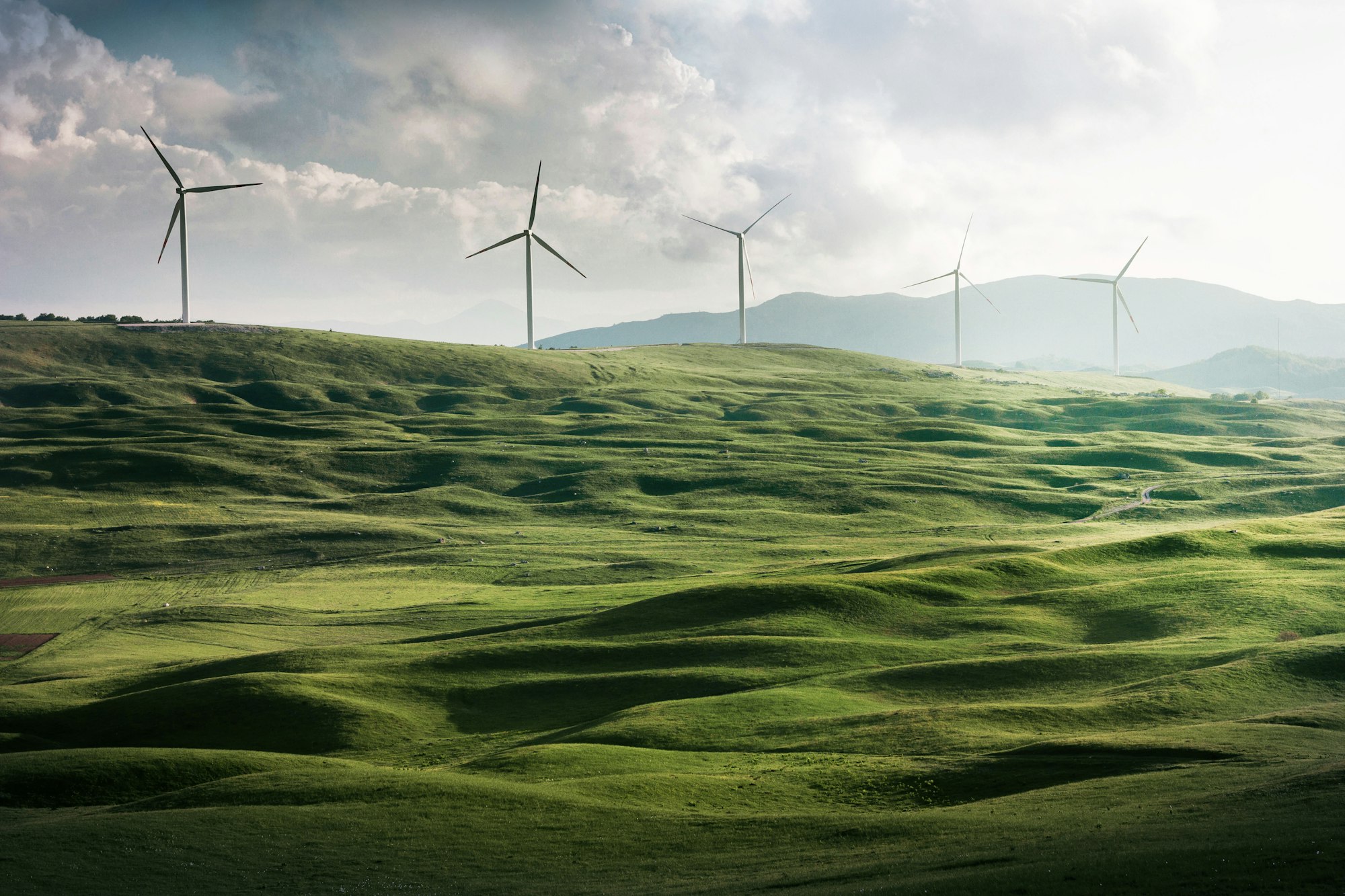
Energy can be stored in different ways. Some of these forms are:
- kinetic (a moving object has kinetic energy)
- gravitational potential (an object which is high up above the surface has g.p.e.)
- chemical (food and fuels, coal, gas, oil, wood etc.)
- elastic/strain (energy in a stretched/compressed object, for example a rubber band or a stretched spring)
- nuclear (energy stored in the nucleus of an atom)
- electrostatic (energy stored in a charged object)
internal/thermal (total energy contained, fate of all other energy stores)
Principal of Conservation of Energy
The principal of conservation of energy states that: Energy can neither be created nor destroyed. It can only change forms/transfer.
Energy transfers
As stated by the principal of conservation of energy mentioned above, energy can only change forms/transfer.
Mechanical work

Imagine you're at the gym lifting weights – that's a perfect example of how mechanical work transfers energy!
Work happens when you use force to move something. So, when you lift a weight against gravity, you're doing work.
Now, let's break it down. When you lift the weight, you're turning your effort (force) into motion.
That motion is like a special kind of energy called kinetic energy. But wait, there's more! As you lift the weight higher, it gains potential energy.
It's like the energy is stored, waiting to be used when the weight comes back down. So, in simple terms, mechanical work is just using your strength to make things move and change their energy.
Whether you're at the gym or working with machines, it's all about turning force into energy!
Electrical work

Electrical work transfers energy through electric currents. For example, powering a light bulb with electricity (electric energy to light and thermal energy)
Think about the electricity powering your favorite light bulb – that's electrical work in action!
Electrical work is all about transferring energy through electric currents. Let's break it down with a simple example.
When you turn on a light switch, electricity flows through a wire and reaches the light bulb. Now, here's where the magic happens.
The electric energy from the current is transformed into two types of energy. First, you get light energy – that's what makes the room bright.
Second, there's thermal energy, which means the bulb gets a bit warm. So, in a nutshell, electrical work is the process of turning electric energy into light and a bit of warmth.
It's like the invisible power in your wires is doing a double job, making things bright and cozy!
Heating

The transfer of thermal energy, also known as heat transfer, involves the movement of thermal energy from an area of higher temperature to an area of lower temperature.
This process causes an increase in the temperature of the receiving object or substance. Let's delve deeper into the concept and the three main methods of thermal energy transfer:
There are 3 methods to transfer thermal energy:
| Method | Description | Example |
|---|---|---|
| Conduction | Conduction is the transfer of thermal energy through direct contact between particles. In a material, high-energy particles collide with low-energy particles, transferring thermal energy. Metals are good conductors due to the mobility of their free electrons. | Metals conducting heat |
| Convection | Convection involves the transfer of thermal energy through the movement of fluids (liquids or gases). In a fluid, warmer, less dense regions rise while cooler, denser regions sink. This creates a circulation of the fluid, transferring thermal energy. | Heating a room with a radiator |
| Radiation | Radiation is the transfer of thermal energy through electromagnetic waves. Unlike conduction and convection, radiation does not require a medium. Objects with a temperature above absolute zero emit thermal radiation. This is how the Sun's energy reaches the Earth. | Sunlight reaching the Earth |
note: please scroll sideways to view the complete table
(We will discuss these further in chapter 2).
Sound waves
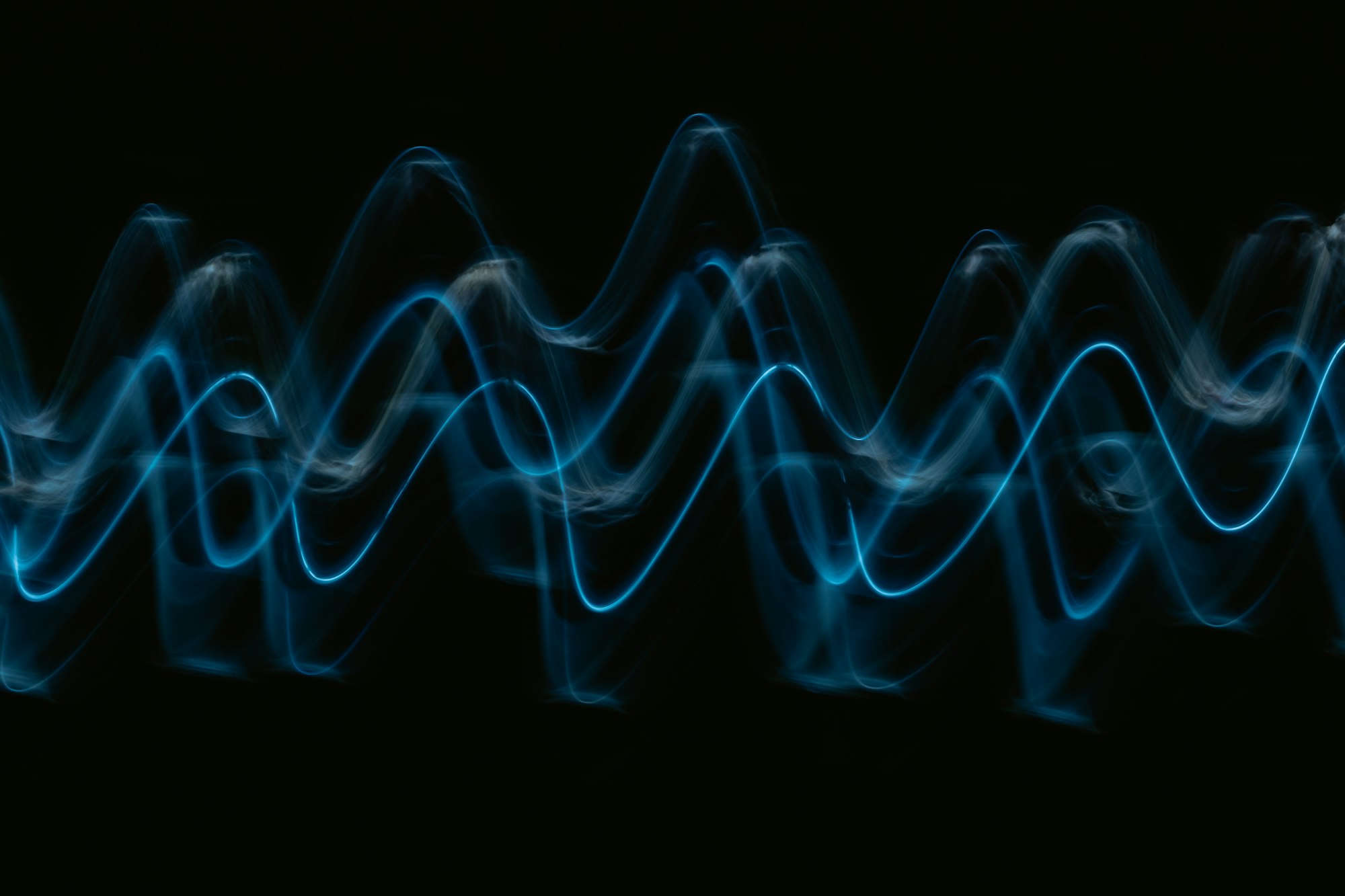
Sound waves are a form of mechanical waves that propagate through a medium, typically air, but they can also travel through liquids and solids.
These waves are created by a vibrating source, such as a vibrating string on a musical instrument, vocal cords during speech, or a vibrating diaphragm in a speaker.
Kinetic Energy

Kinetic Energy (KE) is the energy associated with the motion of an object. It is the energy that an object possesses due to its velocity.
The faster an object is moving, the more kinetic energy it has. Kinetic energy is a scalar quantity and depends on both the mass and the square of the velocity of the object.
The formula for kinetic energy is given by:
KE = 1/2 mv^2
Kinetic Energy = 1/2 x mass x velocity^2
In this formula, the kinetic energy is calculated as half the product of the mass and the square of the velocity.
Let's break down the components:
- m: The mass of the object, measured in kilograms (kg).
- v: The velocity of the object, measured in meters per second (m/s).
The formula indicates that the kinetic energy is directly proportional to the mass of the object and the square of its velocity.
This implies that doubling the velocity will result in four times the kinetic energy, while doubling the mass will result in a doubling of kinetic energy.
For example, if you have a car with a mass of 1000 kg moving at a velocity of 20 m/s, you can calculate its kinetic energy using the following method:
KE = 1/2 × 1000 × (20)2
The kinetic energy of the car in this example is: 20000 Joules
Gravitational Potential Energy

Gravitational Potential Energy (GPE) is a form of potential energy associated with the position of an object above the Earth's surface.
It is the energy stored in an object due to its height or elevation in a gravitational field. The higher an object is positioned above the Earth, the more gravitational potential energy it possesses.
The formula for gravitational potential energy is given by:
GPE=mgh
where:
- GPE is the gravitational potential energy,
- m is the mass of the object,
- g is the acceleration due to gravity (approximately 9.8 m/s² on the surface of the Earth),
- h is the height or elevation of the object above a reference point.
In this formula, the product of mass, gravitational acceleration, and height represents the potential energy stored in the object due to its position.
To calculate the change in gravitational potential energy (ΔGPE), you can use the following formula:
ΔGPE=mgh(f)−mgh(i)
where:
- ΔGPE is the change in gravitational potential energy,
- m is the mass of the object,
- g is the acceleration due to gravity,
- h(f) is the final height,
- h(i) is the initial height.
This formula allows you to determine how the gravitational potential energy of an object changes as its height above the Earth's surface changes.
Fun Simulation for Kinetic and Gravitational Potential Energy
In case you have not already seen/used this sumulation, here is the Energy Skate Park by PHET Colorado. You can apply the concepts learnt from the previous two sections and better understand the concept.
Work

Alright, let's chat about work. Imagine you're pushing a heavy car – that's work happening!
It's a way to measure how much energy is being transferred when you make something happen.
Whether you're lifting weights (that's mechanical work) or turning on a light (that's electrical work), the amount of work you do is equal to the energy you're giving to the thing you're working on.
It's like a cool connection – the more work you put in, the more energy you're transferring. So, work is like the measuring tape for energy transfer, telling us how much oomph we're putting into making things go!
The formula for work is as follows:
work done = force x distance
W = Fd = ΔE
where ΔE is the amount of energy transferred, and distance is the distance moved by the object in the direction of the force.
Work is measured in Joules (J). 1 J = 1 Nm (newton metre)
For example, imagine you lift up a book at ground which weighs 2 kgs upwards to a height of 5m.
To calculate the work done, we need to calculate the force and the distance in the direction of the force.
Since the book was at ground, the vertical distance is 5m and the force will be 2g which is approximately 20N.
W = F d = 20 × 5 = 100 Nm
100 Nm = 100 J
So, the work done was 100 Joules.
Energy Resources
There are 2 types of energy sources:
- renewable
- non-renewable (previously stored energy, finite, will run out eventually)
non-renewable energy cannot be replaced when used up while renewable energy cannot run out.
There are many different energy sources:
- Fossil fuels (chemical energy, non-renewable)
- Biofuels (chemical energy, renewable)
- Waves/Water (hydroelectric, renewable)
- Geothermal energy (renewable)
- Solar energy (renewable)
- Wind energy (renewable)
- Nuclear fuel (nuclear energy, non-renewable)
Chemical energy (Fossil fuels and biofuels)
Fossil fuels (coal, oil, natural gas) are formed from the remains of plants and animals which lived millions of years ago.
Biofuels are fuels derived from organic materials, such as plants, crops, agricultural residues organic waste etc. Examples include ethanol and metanol.
Fuel undergoes a process known as combustion, this releases heat.
The heat from combustion is used to spin a turbine, which spins a generator producing electricity
Hydroelectric/Tidal energy (from water)
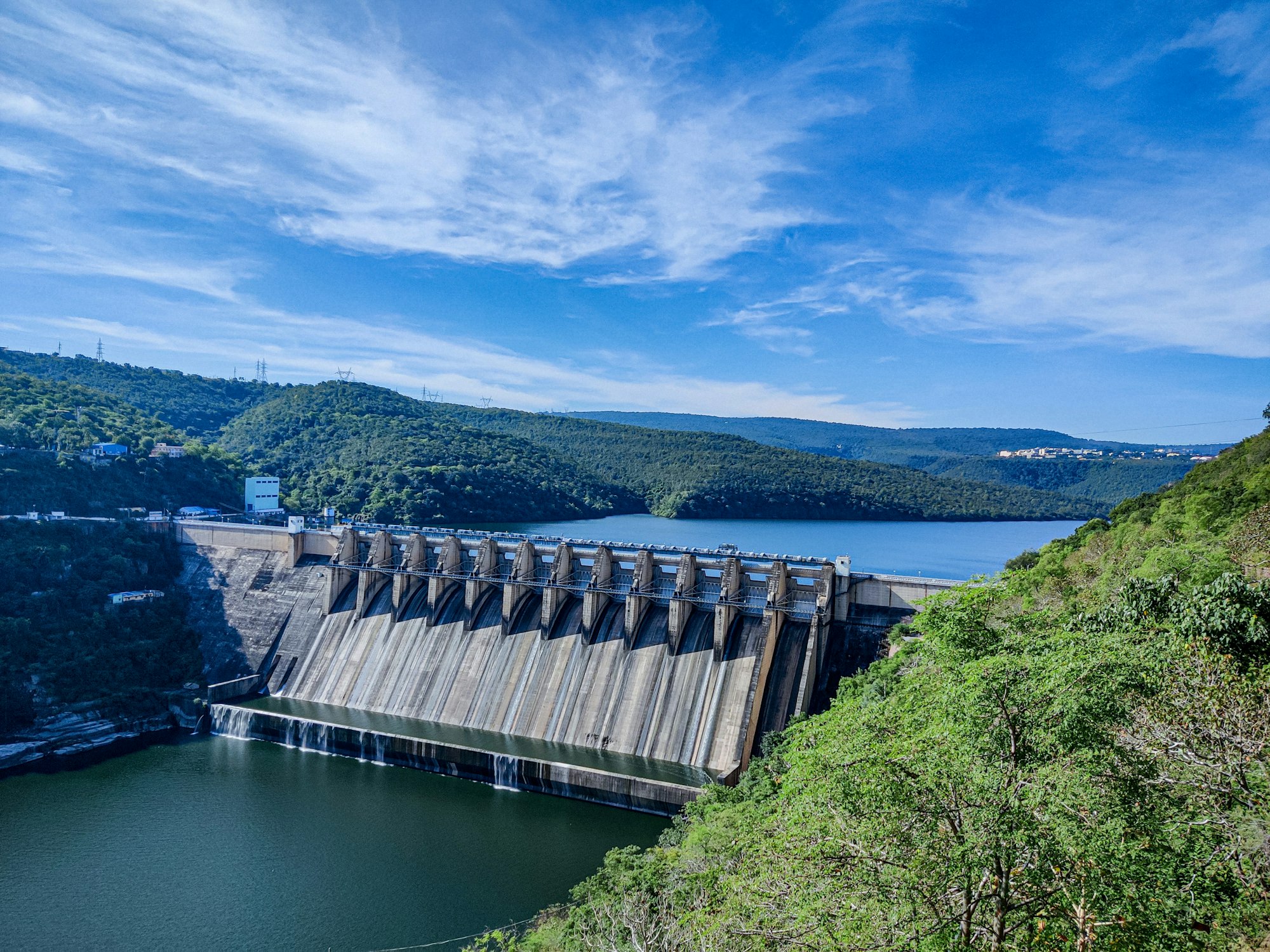
The flow of water from a higher to a lower level (usually in a dam) is used to drive a water turbine which is connected to a generator, this generator produces electricity.
Advantages
- Renewable
- Low greenhouse gas emissions
Disadvantages
- Initial high construction cost
- Dams can cause a huge impact on the environment
- Causes harm to aquatic wildlife, as it destroys their habitats
- Often leads to displacement of people living in areas that will get flooded
Geothermal energy

Cold water is pumped down into the hot rocks below the Earth’s surface, this water heats up and is used to drive a turbine, which is connected to a generator which produces electricity.
Advantages
- Renewable
- Low greenhouse gas emissions
Disadvantages
- Initial high drilling cost
- Location-dependent, not all locations can be a geothermal power station
Solar energy
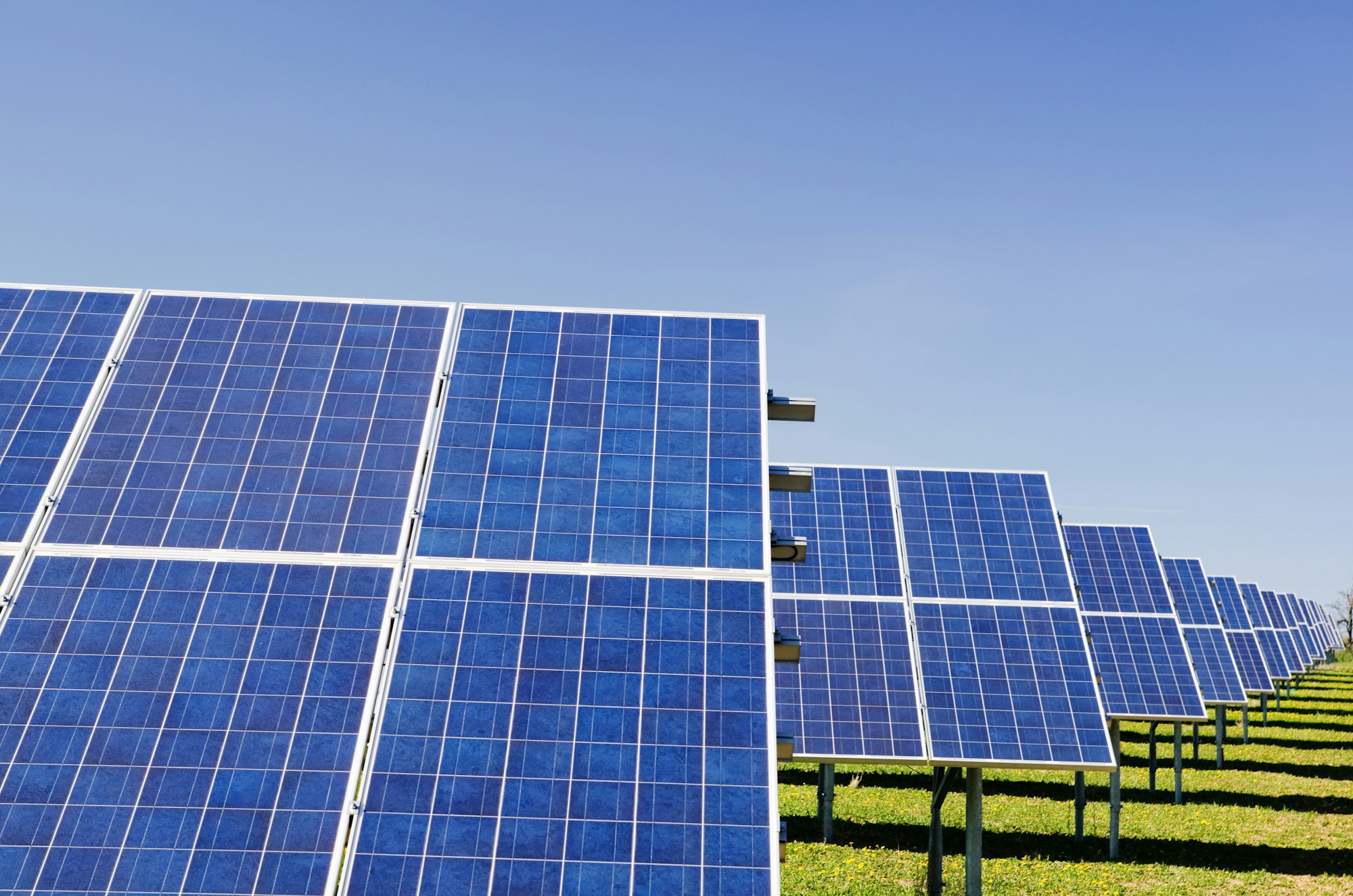
Solar energy serves two primary purposes: heating and electricity production:
Heating
One application of solar energy is in heating water and other substances. This process involves capturing the energy from electromagnetic waves emitted by the sun and storing it as internal energy in solar panels.
The accumulated energy can then be utilized to heat water, providing a sustainable and eco-friendly alternative to traditional heating methods.
Additionally, solar energy can be harnessed to achieve extremely high temperatures, up to 3000°C, through the use of solar furnaces. In a solar furnace, a large curved mirror focuses the sun's rays onto a small area, generating intense heat.
This technology is versatile, as solar furnaces can be employed not only for heating purposes but also for generating electricity by utilizing the produced heat to drive turbines or other power-generating systems.
Producing Electricity
Solar cells, typically constructed from semiconducting materials, play a crucial role in converting sunlight into electricity.
These cells capture photons from sunlight, releasing electrons and generating an electric current.
The electricity generated can either be used immediately or stored in batteries for later use, providing a reliable source of renewable energy.
To scale up energy production, multiple solar cells are often connected together to form solar panels.
This aggregation allows for the generation of larger amounts of electricity, making solar power an increasingly viable solution for meeting the growing global demand for clean and sustainable energy.
Advantages
- Renewable
- Environment friendly
Disadvantages
- Expensive to setup
- The sun is not always out and bad weather can affect this as well
Wind Energy
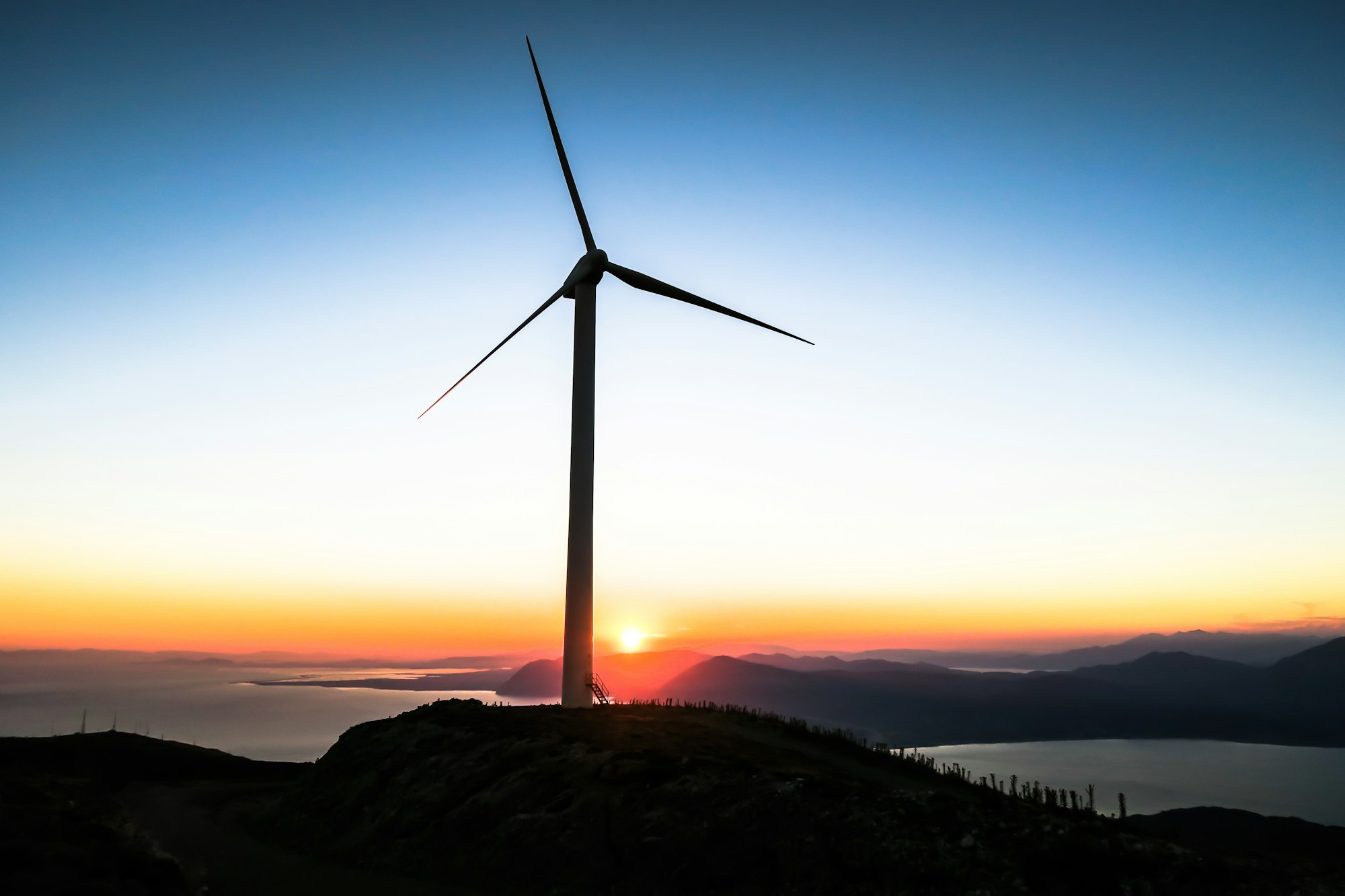
Wind energy, driven by the sun's radiation, is a vital player in the renewable energy game. Using giant wind turbines, it transforms the kinetic energy of moving air into electricity, contributing to a cleaner, greener world.
Advantages
- Renewable: Wind is an endless resource, ensuring a constant and sustainable energy supply.
- Zero Emissions: Wind energy is environmentally friendly, producing electricity without emitting greenhouse gases.
Disadvantages
- Location Dependency: Wind farms require specific locations with consistent wind speeds, limiting their feasibility in certain areas.
- Aesthetics: Some find the appearance of wind turbines intrusive, impacting the visual landscape.
- Maintenance: Regular upkeep is necessary to ensure the efficiency and longevity of the turbines.
Nuclear Energy
Nuclear energy, derived from the fission of uranium in a nuclear reactor, is a powerful source of electricity with its own set of characteristics.
How it Works
Inside a nuclear reactor, uranium undergoes fission, releasing a tremendous amount of energy. This released energy is then harnessed to generate electricity, making nuclear power a key contender in the global energy landscape.
Advantages
- High Energy Output: Nuclear energy is incredibly efficient, producing large amounts of power from a relatively small amount of fuel. It's like getting a lot of bang for your buck in the energy world.
- Low Greenhouse Gas Emissions: Unlike fossil fuels, nuclear power generation results in low greenhouse gas emissions. It's a clean energy option that contributes to the fight against climate change.
Disadvantages
- Radioactive Waste: One of the major drawbacks is the production of radioactive waste. Proper disposal and management of this waste are critical concerns, posing challenges for long-term storage and environmental impact.
- Safety Concerns: The potential for accidents, albeit rare, raises significant safety concerns. Events like Chernobyl and Fukushima serve as reminders of the catastrophic consequences that can occur in the event of a nuclear accident.
- High Initial Costs: Building nuclear power plants requires substantial upfront investment. While operating costs may be relatively low, the initial capital investment can be a barrier to widespread adoption.
The Sun
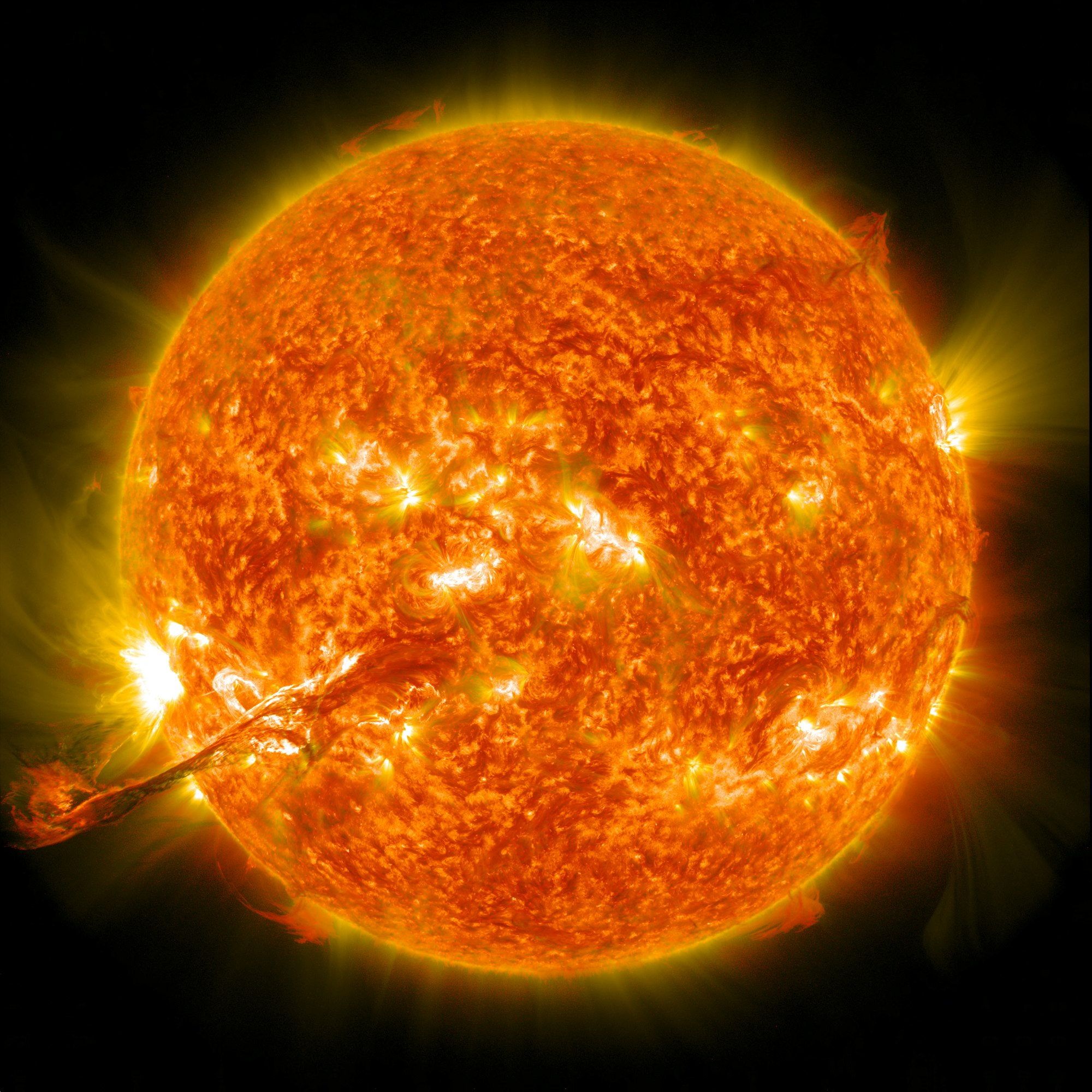
The sun stands as the primary cosmic source of energy, illuminating and warming our world with its radiant brilliance. Its energy, sourced from the nuclear fusion of hydrogen atoms, powers life on Earth.
While geothermal, nuclear, and tidal sources play roles in our energy mix, reproducing the sun's fusion process on Earth for electricity generation remains a current technological challenge.
Nevertheless, ongoing research is dedicated to unraveling the mysteries of controlled nuclear fusion, holding the promise of a future where the sun's inexhaustible energy becomes a feasible and sustainable power solution.
Efficiency of Energy transfers
The efficiency of device refers to how much useful energy is obtained from a process compared to the total energy input. It is the percentage of the energy supplied to a device that is usefully transferred.
The efficiency (η) of a device can be calculated using the following formula:
Efficiency ((η) = [(Useful Energy Output) / (Total Energy Input)] * 100%
This formula expresses efficiency as a percentage, representing the ratio of useful energy obtained from a process to the total energy input.
It provides a quantitative measure of how effectively a device or system converts input energy into useful output.
Power

Power is defined by the rate at which energy is either transferred or converted.
It encapsulates the concept of work done per unit time, illustrating the intensity or speed of energy-related processes.
Another facet of power lies in its description as the amount of energy transferred per unit time, providing a comprehensive understanding of the vigor with which energy is being utilized or moved.
Expressed in the unit of Watts (W), power quantifies the capacity to perform work or instigate change over a specific duration.
Whether it's the energetic pulse of a machine or the output of a renewable source, power serves as the dynamic heartbeat that characterizes the efficiency and swiftness of energy transformations across diverse systems and applications.
Power (P) = Work done / Time or Power (P) = Energy transferred / Time
1 W = 1 J/s
1 kW (kilowatt) = 1000 W = 103 W
1 MW (megawatt) = 1 000 000 W = 106 W
***this is the end of this guide. Hope you enjoyed it! Thanks for using Igcsepro.org! We hope you will give us a chance to serve you again! Thank you!
